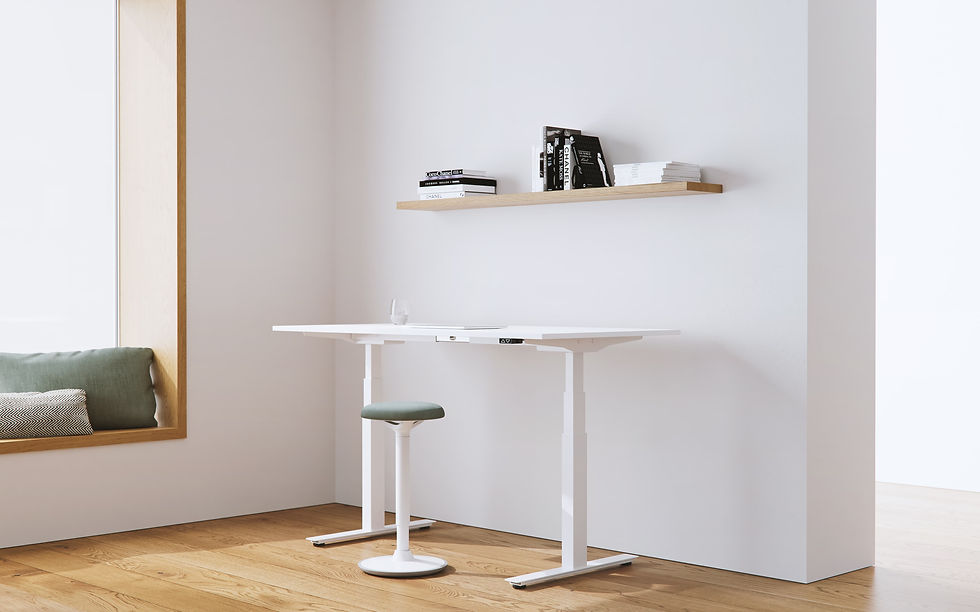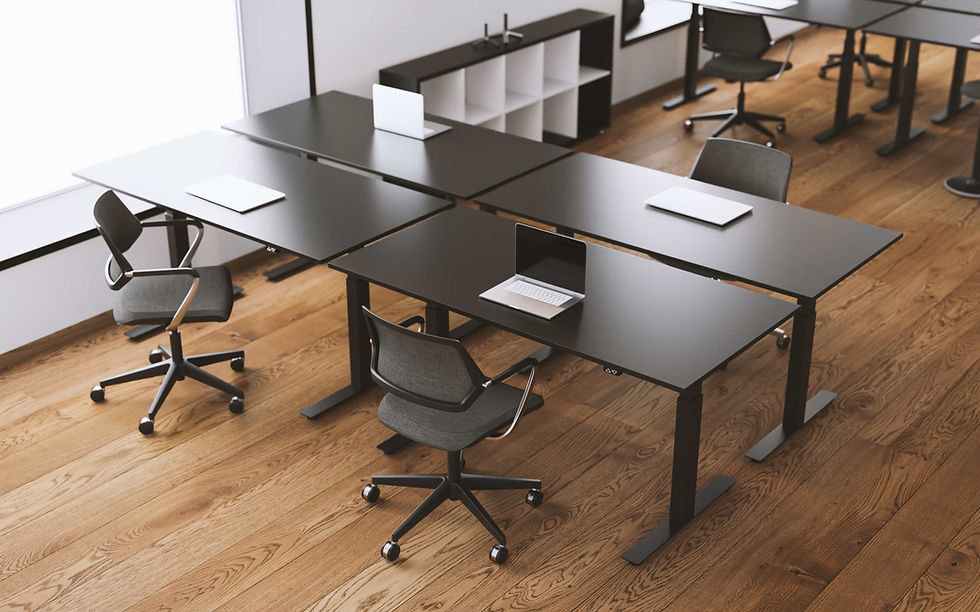Écrans acoustiques de bureau
Nous proposons un écran acoustique avant sur mesure pour votre bureau debout. Il est possible de commander à partir de presque tous les tissus et dans presque toutes les dimensions. Dans notre offre standard, vous pouvez choisir parmi les différentes couleurs de tissus ainsi que différentes dimensions pour rendre votre lieu de travail plus privé et plus calme.
How to Choose the Right acoustic screens and panels

Before choosing acoustic solutions, think about how noisy your space is, whether you need more privacy, and how much free wall or desk space you have. The goal is to balance sound absorption, layout, and design so your workspace feels calm and looks professional.
1. Define the main purpose
Decide what matters most for your space:
-
reducing overall noise
-
creating visual and acoustic privacy between desks
-
improving speech clarity in meeting or call areas
This will help you choose between desk-mounted screens, freestanding dividers, or wall panels.
2. Choose between desk screens and wall panels
-
Desk acoustic screens – best for open-plan offices and shared desks where you want privacy between workstations and better focus.
-
Wall acoustic panels – ideal for echo reduction in meeting rooms, corridors, reception areas, or home offices with hard surfaces.
Many offices use both: screens around desks and panels on nearby walls.
3. Measure your space and layout
Check desk dimensions and wall space:
-
For desk screens, confirm width and height so they fit your desks and sit at a comfortable eye level when seated.
-
For wall panels, measure the available area and plan groups of panels instead of randomly placing individual pieces.
4. Consider acoustic performance
While detailed acoustic values (like NRC) may vary, in general:
-
Thicker and upholstered panels offer better sound absorption.
-
Placing panels near the main noise sources (open areas, call zones, hard reflective walls) is more effective than spreading them randomly.
5. Choose shapes, colors, and design
Acoustic products are part of your interior design:
-
Neutral colors for corporate or minimal offices
-
Accent colors for creative spaces or zoning
-
Geometric patterns or panel sets to create visual interest on large walls
Good acoustic design can also support your brand and interior style.
6. Check mounting and installation type
-
Desk screens may be clamped or screwed to the desktop.
-
Wall panels can be installed with brackets, rails, or adhesive systems.
Choose a system that fits your wall type and allows easy repositioning if needed.
7. Think about flexibility and future changes
If you regularly reconfigure workstations or move teams:
-
choose screens and panels that are easy to relocate
-
use modular systems that can be extended with more panels later
8. Balance budget and impact
You don’t need to cover every surface. Often, a combination of desk screens and strategically placed wall panelsdelivers noticeable acoustic improvements without overinvesting.

Summary
The right acoustic screens and wall panels help reduce noise, improve privacy, and make offices and home workspaces more comfortable to work in.
You might like
FAQ – Acoustic screens & wall panels
1. What is the main benefit of acoustic screens and panels?
Acoustic screens and panels help reduce noise levels, echoes, and distractions. They make conversations clearer and create more comfortable, focused work environments.
3. Do acoustic panels completely soundproof a room?
No. Acoustic panels and screens reduce echo and noise levels, but they do not fully soundproof a room. They are designed to absorb sound, not block it completely.
5. Are acoustic screens suitable for open-plan offices?
Yes. Desk acoustic screens are very effective in open-plan offices because they create personal zones, reduce direct noise between workstations, and improve concentration.
2. When should I use desk acoustic screens instead of wall panels?
Use desk acoustic screens when you want to create privacy and reduce noise directly between people working at nearby desks. Use wall panels when you need to reduce overall reverberation in a room.
4. How many acoustic panels do I need in a room?
It depends on the size of the room, the number of hard surfaces, and the noise level. As a rule of thumb, treating key wall areas near desks, meeting tables, or noisy zones with a set or group of panels is more effective than a single small panel.
6. Can I use acoustic panels in a home office?
Absolutely. Wall panels are great for home offices, especially in rooms with hard floors and minimal soft furnishings. They reduce echo on video calls and make the space more pleasant to work in.
7. How are acoustic panels installed?
Most wall panels are mounted using brackets, rails, or strong adhesive systems, depending on the product and wall type. Desk screens typically use clamps or brackets fixed to the desk.
8. Do acoustic products require maintenance?
Minimal maintenance is needed. Usually, periodic dusting or gentle vacuuming is enough. For upholstered surfaces, follow the fabric care instructions if any stains appear.























